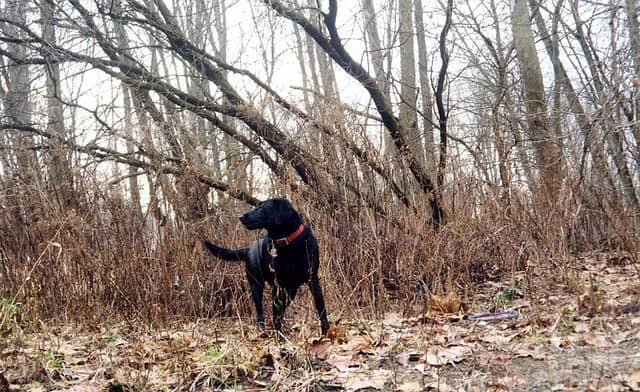Preparing Your Dog for Bird Season
Northeast Hunting 08.03.11

Let’s face it, the dog days of August don’t seem like the time to be thinking about bird season; days are long and hot, the kids are off so family time is a priority, stripers are running, yard work, vacations, the list goes on…
Now take a look at your best pal over there in the shade and try to remember the last time you took him for a good run- not a walk around the block to relieve himself, but an actual workout. That’s right, a workout. We tend not to think of our trusty hounds as athletes, but they really are.
Consider the ground your dog covers in a single hunt, the uneven terrain, high grass, hills, kettle holes and everything in between. They are eager to traverse these conditions and appear to do so tirelessly and with little effort. When witnessing this amazing display of focus and athleticism, it’s easy to forget that a dog’s anatomy is not unlike our own having many of the same muscles, tendons, and ligaments (just ask anyone who has endured a canine ACL tear).
Now ask yourself, would I attempt to run a 10k race over rough terrain without training before hand? Would you consider running that race for which you hadn’t trained in bare feet? Of course not, but that’s exactly what we’re asking our loyal companion to do when we choose to “hunt him into shape.”
To compound matters, the early days of upland bird season in New England are often reminiscent of summer; the sun is still overhead making for heated conditions in the field and a host of potential risks for our four legged friends. Heat exhaustion, dehydration, heart failure, and other complications from over exertion are real dangers especially for older animals.
Each season, scores of field dogs perish needlessly due to nothing more than their owners being too busy (or lazy) to prepare them for the season. Can you imagine having to return home to explain to your family that you basically allowed their beloved pet to hunt himself to death? Good luck with that!
The good news is, with a little planning and commitment you can prevent the above scenario and have a healthier, more durable field companion to enjoy your fall pursuits with.
Getting Started
- If it’s been awhile since your dog’s last check up, get him to the vet to be sure he’s in good general health and up to date on his shots
- The earlier the better, allow 4-6 weeks to prepare for the season so you can go easy
- Get up early and run your dog at dawn, the dewy ground will help keep him cool
- Feed and water him at least a half hour BEFORE exercise, he needs fuel to burn!
- Resist the temptation to cut his food intake to shed weight-a working dog needs calories and will drop those extra pounds in due course
- Start off easy with roadwork, long runs on dirt roads are best, 30 minutes is plenty
- Avoid field work until the weather cools (70 or less) and he’s in better shape
- Dust off that mountain bike! (You’re probably out of shape too) it will be easier to keep up with him, and it will also let him know that you’re running, not hunting
- Bring plenty of water for your dog (and yourself), stop often for breaks in the shade and don’t continue along until he takes water, while not allowing him to gulp down too much. Help cool him by squirting water on the back of his neck and between his shoulder blades
- Keep an eye on his pads, they are sure to be soft from time off and need to be toughened; treat cuts immediately, apply bag balm to dry, cracked pads
- Warm him down after his workout, keep him at heel for a slow walk back to the truck
- Avoid overworking him, if your adult dog is a little stiff give him an occasional aspirin and avoid working him on consecutive days
Following these simple guidelines will go a long way toward assuring that your ‘ole hunting buddy is prepared for the season. It’s also a good idea to treat your dog with tick repellent before starting your regimen. Summer in the Northeast is a notoriously bad time for the scourge of the mite world, try to avoid tick laden areas altogether to minimize risk of disease.
Remember to enjoy this bonding time with your canine pal, set him up for success by removing potentially negative experiences from the equation. Other dogs, nearby busy roads, or other people can distract your dog from the task at hand (and frustrate his owner), keep this in mind when choosing your location to assure a pleasant and productive start to your upland season.

